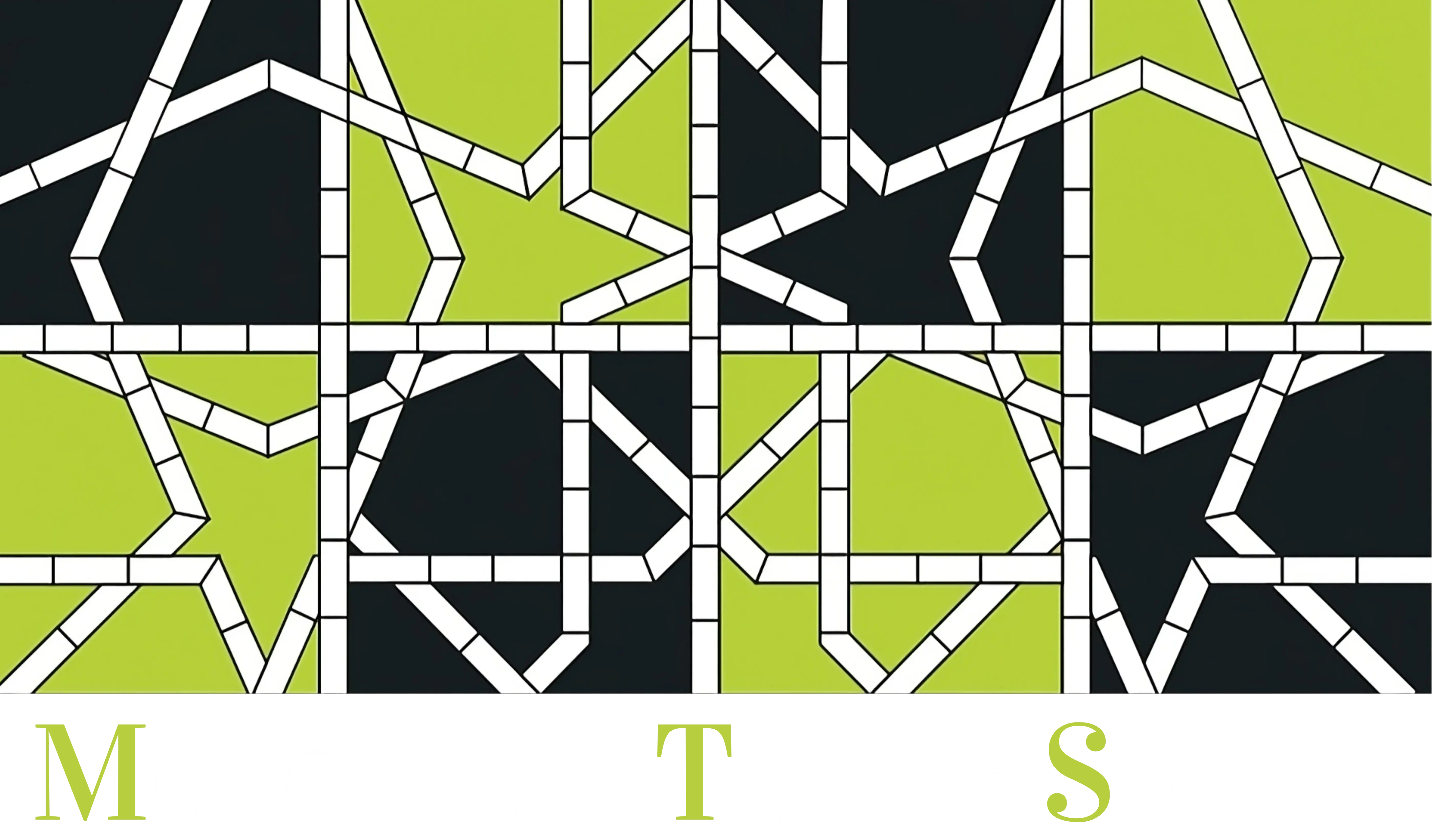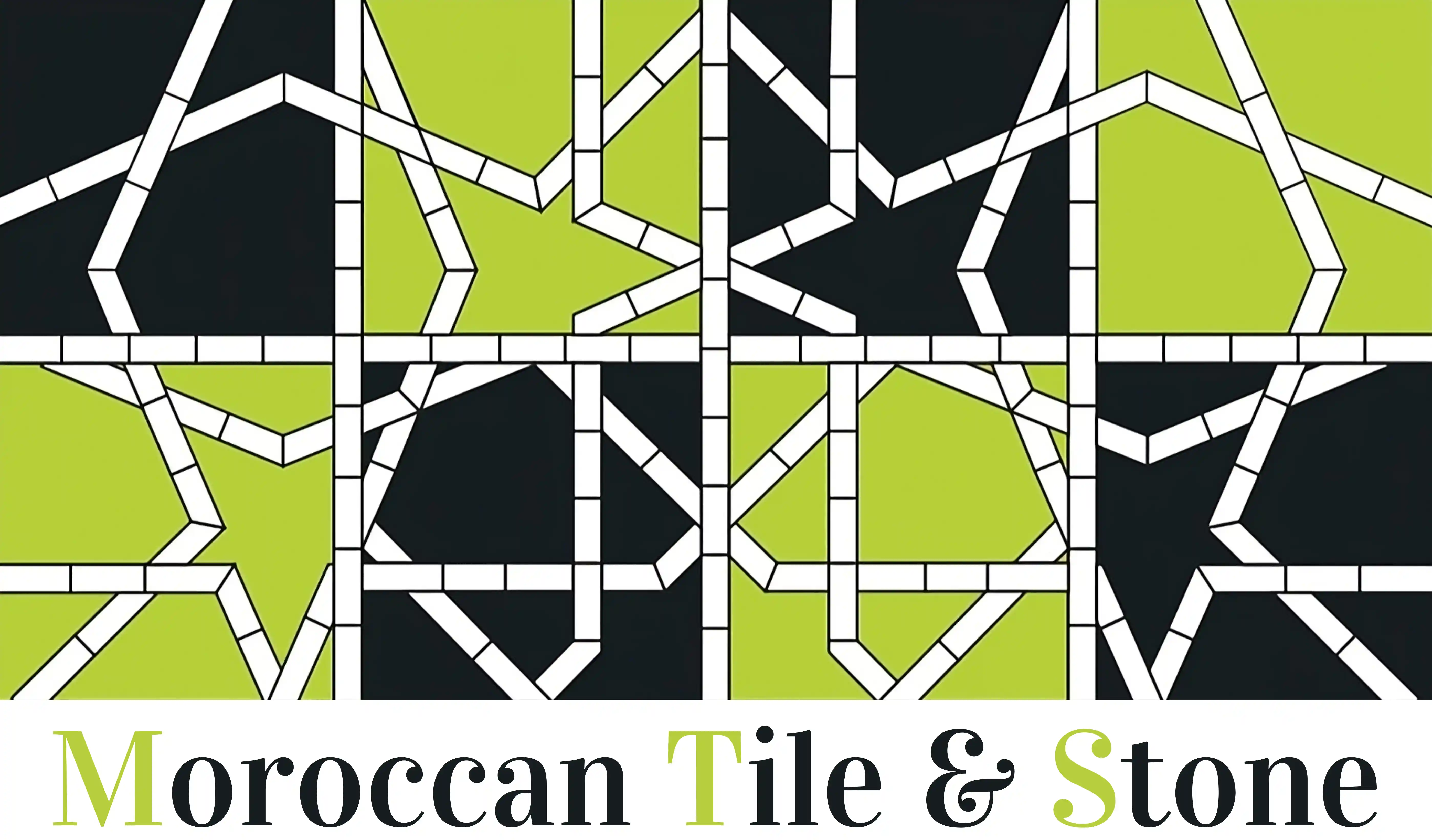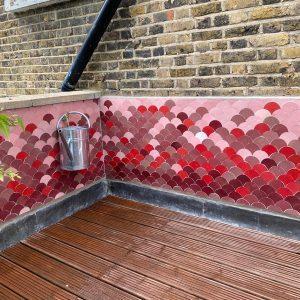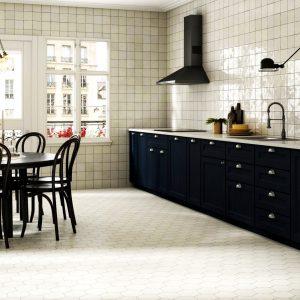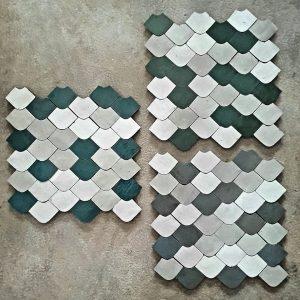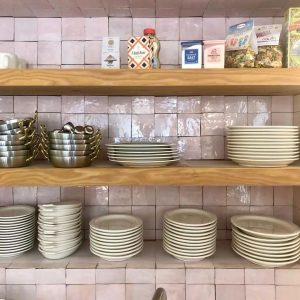Have you considered using Fish Scales Moroccan Tiles in your interior design?
Moroccan tiles have a substantial historical background. it reflects traditional design, and it exists in almost every Moroccan household, or an old building in ancient medinas such as Fez, Meknes, and Marrakech. Moroccan tile or Moroccan mosaic is traditionally handmade by artisans and craftsmen, using natural clear clay and cement, mixed with water, shaped by hand and fired in kilns, with a touch of influence from the ancient Mediterranean and Middle East regions on the design. It is the unique traditional design that makes Moroccan Zellije tiles so charming and beautiful, with colorful glass and an uneven finish in different shapes and sizes, making the Moroccan tile always look like new with age, as historical works of art.
Steps for traditional and natural tile production in Morocco
To produce traditional and natural tiles in Morocco, the clay is mixed with water, kneaded by hand, and shaped into 4-inch tiles that are about half an inch thick. After sun-drying, a special oven is used to fire each single-colored tile at a specific temperature. The tiles are then sorted and sent to apprentices who draw shapes on them for the mosaic pieces. Zellige templates are used to fit as many pieces as possible onto each tile.
The Moroccan tile is then cut by a skilled artisan who sits cross-legged in front of a simple workbench. They use a hammer-like tool, carefully sharpened at each end, to cut the small, delicate pieces of the tile. After filing the edges, the zellige pieces are sorted into baskets according to their shape and color. An artisan can cut up to about 1000 pieces per day.
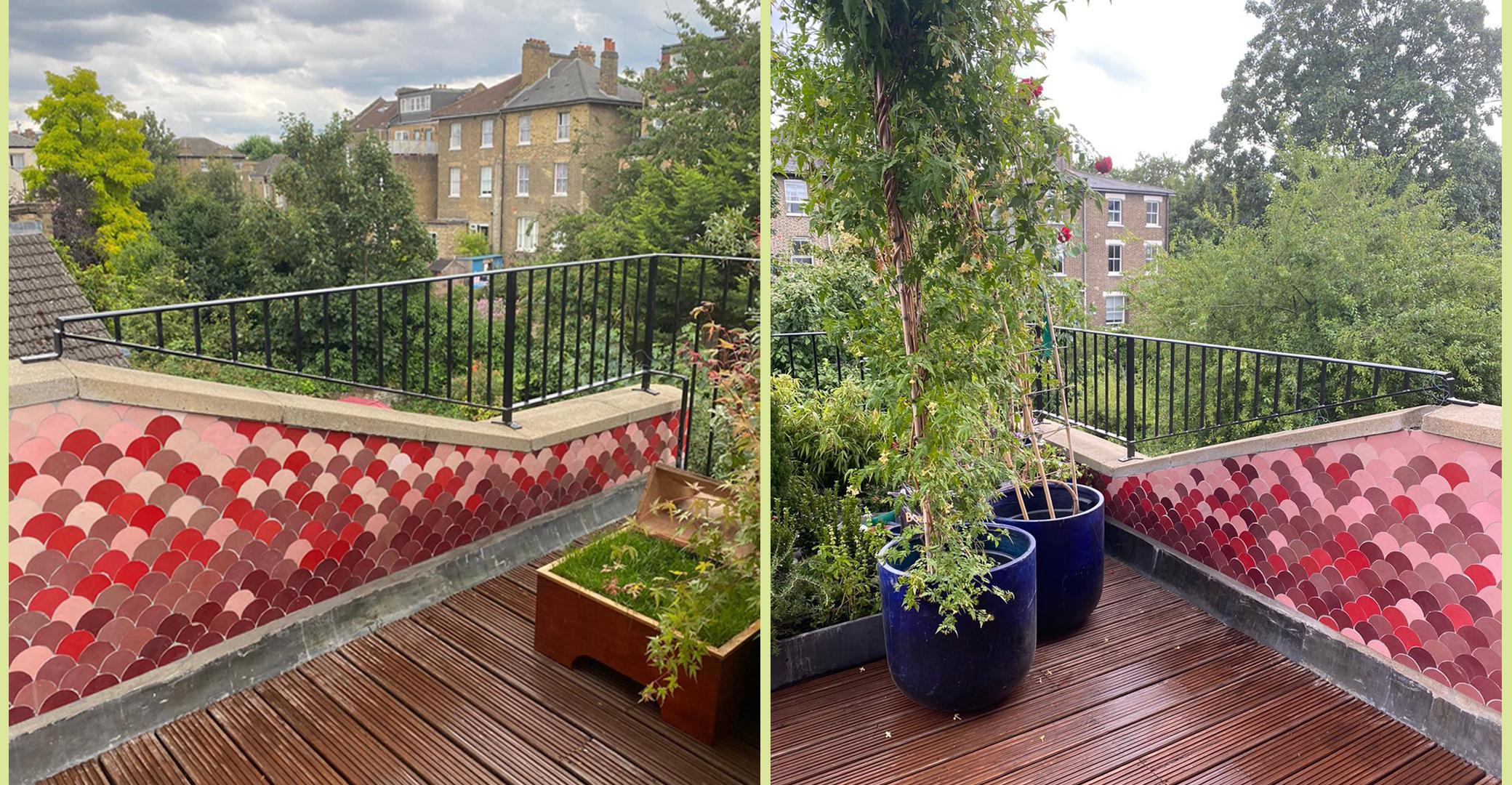
The Art of Creating Moroccan Tiles: A Traditional Craft with Modern Applications
Moroccan tiles also are among the foremost creative and amazing tiles within the world. Tons of nations use Moroccan artisans to assist them within the construction of buildings and mosques.
Since Moroccan tiles became very widespread, they're not using it only in traditional Moroccan buildings but also in modern ones.
People around the world mostly use Moroccan tiles as (cement tiles, large sized zellige and much more..) for kitchen decoration, bathrooms, Hammams (traditional bathroom), pools …
The Moroccan tiles are prepared during a traditional way by mixing clay with water. After the obtention of the proper paste, they spread it on the bottom.
After that , they put it in wood molds compartments and adjust it by using special knives. While the clay remains wet they cut it into different shapes and sizes.
The final step is tiles coloring and therefore the application of a final layer of clay to carry everything together.
Artzellige is understood for the simplest Moroccan tiles, because of the superb quality of the clay and also the assistance of our local artisans who always give new color ideas, modify the shapes so as to form the tiles more appealing for our visitors.
